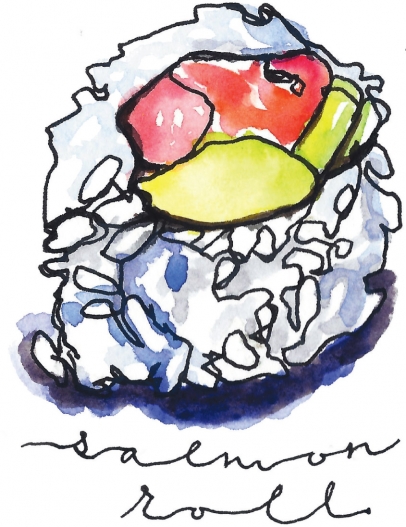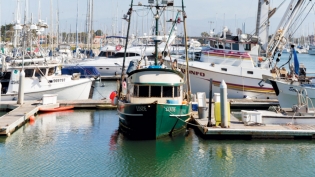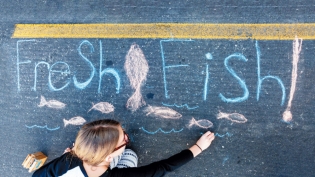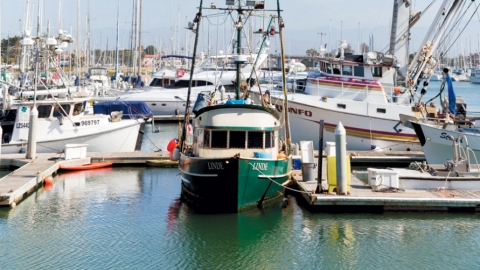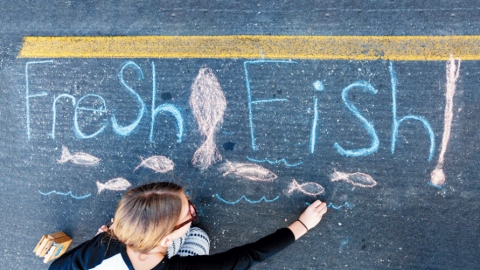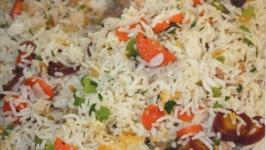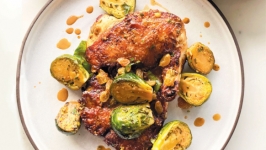Sustainable Sushi
Yes, you can eat your sushi and be sustainable too. The following seafood options have the highest sustainability rating and (all but one) the lowest risk for mercury content. Whether they are wild caught or farm raised, choosing any of these from a sushi menu will help to preserve the health of our oceans and their sea life.
Abalone/Awabi: Farmed worldwide in contained production systems
California’s wild population has greatly declined and still suffers from illegal poaching. Farmed abalone allows the wild populations to recover and, because they eat only algae, requires no wild fish for feed. A good substitute for giant clam, shrimp and other rich shellfish.
Albacore Tuna/Shiromaguro: Troll- and pole-caught in the United States and the Canadian Pacific and Hawaii, Japan North Pacific
While demand for tuna has continued to rise and stocks are declining, albacore is the best choice because they are faster to mature and breed. Tuna fishing is notorious for its devastating bycatch—other sea life being caught and killed in the longlines. Troll- or pole-caught albacore are better options. Note: Albacore has moderate levels of mercury.
Arctic Char/Iwana: Farmed in a closed containment system in North America or Scandinavia
Arctic char, closely related to trout and salmon, is sustainable when farmed in a closed system that doesn’t expel waste. A good substitute for farmed salmon, which is often farmed in open systems that risk dispersing parasites and upsetting the genetics of wild fish.
Atlantic Mackerel/Saba: Purse seine in the United States North Atlantic and Atlantic Canada
The fishing gear used for Atlantic mackerel has little impact on other sea life and their stocks are strong. Traditionally served salt cured because otherwise it must be consumed within hours after being caught to prevent potential food poisoning.
Capelin/Karafuto-Shishamo: Wild Icelandic
The deep-orange roe—masago—from capelin fish are used as garnish or atop nigiri. Iceland is the world’s largest harvester and uses highly sustainable fishing practices.
Mussels/Muurugai: All sources
Most mussels are farmed in suspended cages or along the seabed. They filter the water around them for their food, thus cleaning the surrounding ecosystem.
Oysters/Kaki: Farmed
Globally, 95% of oysters are farm raised. Like mussels, they clean their habitat with their filter-feeding system.
Sablefish (Black Cod)/Gindara: Bottom longline, bottom trawl (California Groundfish Collective) or trapped US West Coast, bottom longline or pot Alaskan
Increasingly available in California, black cod is delicious smoked as an alternative to the popular but seriously unsustainable freshwater eel, unagi.
Salmon/Sake: Wild Alaskan
Wild salmon populations in California and Oregon are complex and their threatened numbers need careful management. While salmon farming in recirculating aquaculture systems has little habitat impact and uses less wild fish as feed than other farming methods, it requires substantial energy use.
Shrimp/Ebi: Wild Trapped Alaskan and British Columbian
U.S. farming of shrimp and freshwater prawns has come a long way toward becoming more sustainable in a worldwide industry that has done severe habitat damage and spread disease.
(Adapted from Sustainable Sushi, A Guide to Saving the Oceans One Bite at a Time, by Casson Trenor, and Monterey Bay Aquarium’s Seafood Watch)


